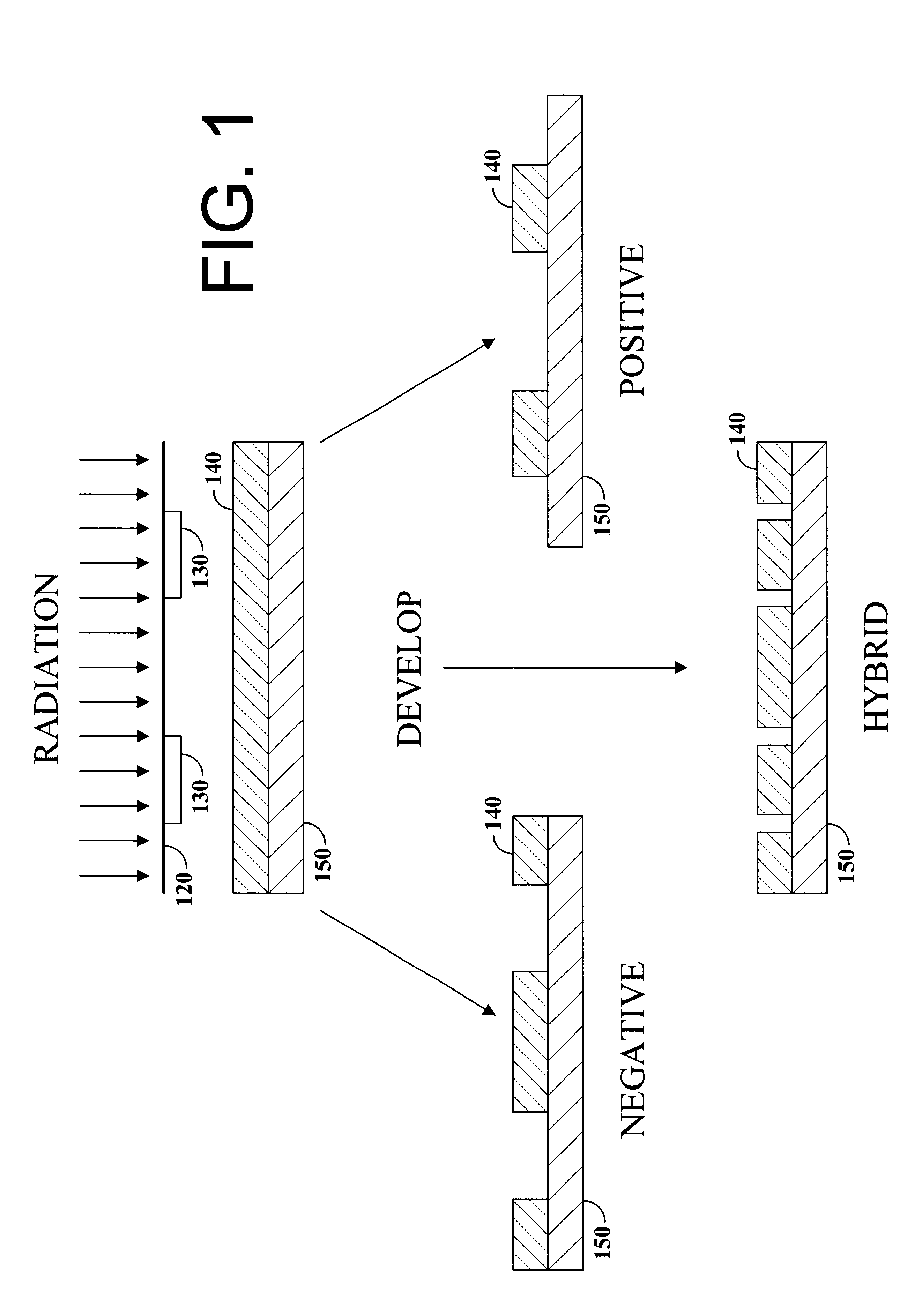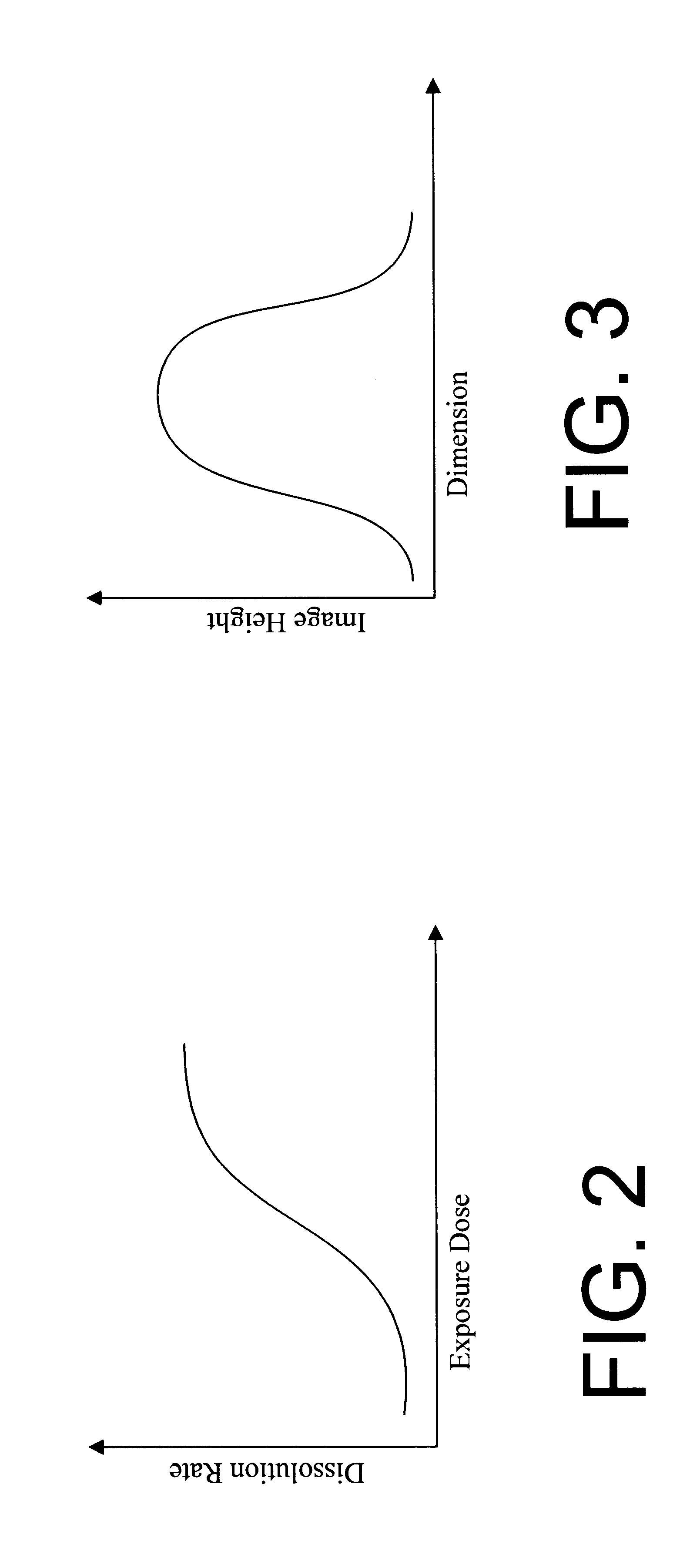Hybrid resist based on photo acid/photo base blending
- Summary
- Abstract
- Description
- Claims
- Application Information
AI Technical Summary
Benefits of technology
Problems solved by technology
Method used
Image
Examples
Embodiment Construction
According to a preferred embodiment of the present invention, a photo resist composition is provided containing a polymer resin, a first photo acid generator (PAG) requiring a first dose of actinic energy to generate a photo acid, and a photo base generator (PBG) requiring a second dose of actinic energy, different from the first dose, to generate a photo base. The amounts and types of components in the photo resist are selected to produce a hybrid resist image, including at least one line and at least one space, within an exposed region of the photo resist as the result of a single exposure to actinic energy. Either the photo acid or photo base acts as a catalyst for a chemical transformation in the resist to induce a solubility change. The solubility change is either positive, rendering an initially insoluble resist soluble in developer, or negative, rendering an initially soluble resist insoluble in developer. The other compound is formulated in material type and loading in the r...
PUM
 Login to View More
Login to View More Abstract
Description
Claims
Application Information
 Login to View More
Login to View More - R&D
- Intellectual Property
- Life Sciences
- Materials
- Tech Scout
- Unparalleled Data Quality
- Higher Quality Content
- 60% Fewer Hallucinations
Browse by: Latest US Patents, China's latest patents, Technical Efficacy Thesaurus, Application Domain, Technology Topic, Popular Technical Reports.
© 2025 PatSnap. All rights reserved.Legal|Privacy policy|Modern Slavery Act Transparency Statement|Sitemap|About US| Contact US: help@patsnap.com



